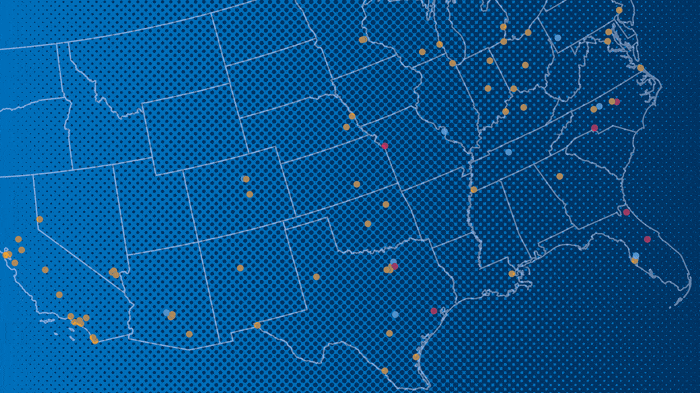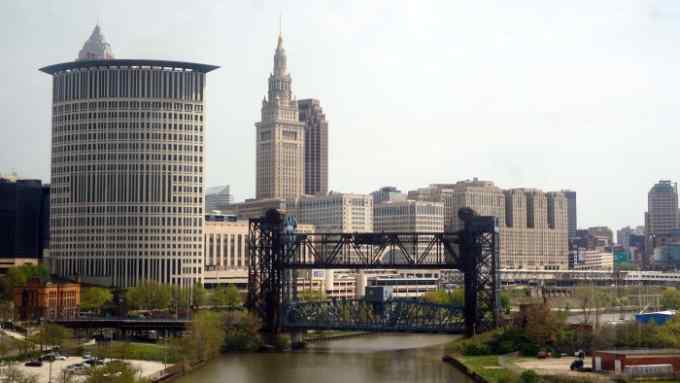How we compiled the 2023 FT-Nikkei Investing in America ranking

Roula Khalaf, Editor of the FT, selects her favourite stories in this weekly newsletter.
When we launched the FT-Nikkei Investing in America ranking last year, we described the process of building our index as a balancing act. We need to weigh all of the factors that make a city attractive to foreign investors and combine them into a single score.
This year the balancing act has been even more challenging, as we have also had to consider the balance between continuity and change. We received many comments after last year’s ranking and we wanted to draw on the feedback to improve the quality of the ranking this year. At the same time, we knew that every change we introduced would make the results less comparable.
We have made a few significant changes to the ranking in order better to reflect investor preferences and the profile of the cities that we want to capture. We have added some new variables to the index to include factors like environmental risk and entertainment. We have also swapped some data sources for existing variables when we have been able to obtain more accurate and more timely data.
How much a variable matters in our ranking is partially based on investor preferences. This is the last source of change, which we would have needed to grapple with even if our variables had stayed exactly the same. We learn about investor preferences through an annual survey, and those preferences change over time. We have updated some of our weightings to reflect the latest information from this year’s survey.
We are confident these changes have produced a better ranking. But it does mean that this year’s results cannot be directly compared with last year’s ranking. Where a city has changed position, it may be due to a combination of changes both within the city itself and within the composition and weighting of the index.
Below is an outline of the categories that feed into the FT-Nikkei Investing in America ranking. We limited our selection to cities in 50 states and DC with a population above 250,000 based on 2022 Census place data.
Workforce and talent
Talent continues to be the top priority for foreign investors. Our metrics remain largely unchanged from last year — we compared cities based on the size of their labour force, their share of college graduates, the number of universities nearby, and the freedom of their labour market. Labour market freedom is modelled after the economic freedom index compiled by Canadian think-tank the Fraser Institute and research by Dean Stansel, a professor at Southern Methodist University who also worked on the Fraser Institute’s index.
In addition to these variables, we also considered the unemployment rate to capture the size of an available workforce.
Sources: Economic Policy Institute, GIS Planning, Unionstats.com, US Bureau of Labor Statistics, US Census
Openness
This category, which looks at diversity, considers the size of a city’s foreign-born population and its racial diversity score — the chance that people of different races will be selected in any random sample of two.
Source: US Census
Business environment
This category looks at the cost and ease of doing business. Like last year, we considered a city’s taxes, incentives, rent, and utility costs, as well as how supportive local policies were towards FDI objectives through a survey with the State International Development Organizations (Sido).
This year, we added a new environmental variable to capture the growing risk that climate change poses to business operations and the efforts by cities to remain resilient to this and other environmental threats. The metric we used was the Federal Emergency Management Agency’s national risk index, which considers the likelihood of various natural hazards and how an area is working to prepare for and adapt to those events.
Sources: Commercial Edge, fDi Markets, FEMA, FT-Nikkei and Sido Survey, GIS Planning, Sales Tax Clearinghouse, Tax Foundation, US Census
Foreign business needs
Here we consider how much a city’s infrastructure and policies support international business. We scored cities by their number of international flights, distance to a major port, internet connectivity, and services to attract foreign investors.
Sources: BroadbandNow, FT-Nikkei and Sido survey, GIS Planning, OAG
Quality of life
We considered the basics in this category: crime risk, school quality, commute time, and housing and healthcare costs. However, this year, we also included variables that would make a city more entertaining and enjoyable to live in. In this year’s ranking, we included the density of dining, retail, leisure and cultural locations, as well as a city’s walkability.
Sources: Applied Geographic Solutions, GIS Planning, Niche, US Census, Zillow
Investment trends
This category looks at how much foreign and domestic investment a city attracted in 2022. This year we also considered its annual gross domestic product per capita.
Sources: fDi Markets and US Bureau of Economic Analysis
Aftercare
Aftercare refers to the level of state and local support available to foreign companies following their investment decisions. Through our partnership with Sido, we asked cities if they had dedicated officials available to support a company’s long-term needs and to communicate regulatory changes, if they helped relocate and integrate foreign workers, if they advised on new investments, and if they provided export promotion services. This year we also asked if cities had multilingual or international programmes and schools available for children of foreign executives.
Source: FT-Nikkei and Sido survey

Comments